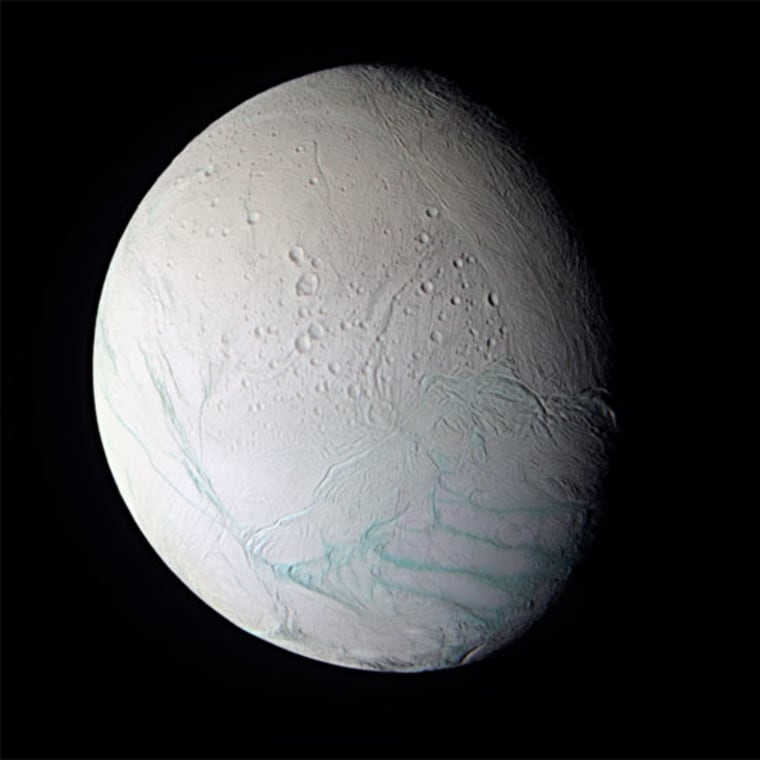New research suggests the ice volcanoes blasting off Saturn's moon Enceladus are rooted in an underground sea, a finding that raises the prospect for microbial life.
Scientists have been trying to figure out what is happening on Enceladus to generate the icy geysers that have been photographed, analyzed and sampled by the Saturn-orbiting Cassini spacecraft.
"This debate has been going on for years — whether there has been liquid water, whether there could be an underground ocean," Cassini scientist team member Candice Hansen-Koharcheck told Discovery News.
Astronomers used ground-based telescopes to look for molecules of sodium, which should be present if rock had mingled with liquid water. They didn't find any, silencing proponents making a case for a subsurface sea on Enceladus.
That point is now moot. At a meeting of European geoscientists in Vienna last week, Frank Postberg with Germany's Max Planck Institute for Nuclear Physics and colleagues explained that the sodium is, in fact, there — it was simply bound in a form (sodium chloride) not detectable by Earth-bound telescopes.
"This is only possible if the plume source is liquid water that is or has been in contact with the rocky material of Enceladus' core," the scientists wrote in the EGU General Assembly's 2009 Geophysical Research Abstracts.
Added Carolyn Porco, head of the Cassini imaging team, "Suffice it to say the prospects of a subsurface sea on Enceladus are excellent."
Before Cassini's arrival, scientists had little interest in the small moon, which is about the size of Scotland, as all of its internal heat should have been released long ago. But the spacecraft found a plume shooting off the moon's south pole, setting off a wave of research and computer modeling looking into how that could be happening.
Tidal forces, caused by the gravitational tug of sister moon Dione and other bodies, appear to be the driver, though researchers haven't dismissed other mechanisms such as the decay of radioactive materials.
And while internal temperatures may indeed be high enough for liquid water to exist, the pool may be short-lived.
"Our research suggests that you can't have a liquid ocean on a long time scale," said James Roberts with John Hopkins University's Applied Physics Lab, who published his findings last year in the journal Icarus.
"The heat has to be there recently, or there has to be another heating source," he told Discovery News.
Hansen-Koharcheck said the evidence for water puts the question of an Enceladus life form on the table.
"It's good news for people looking for life in other environments, because liquid water is quite a benign environment," she said. "If you have liquid water and no radiation concerns, it's a good environment. That's not to say that there's any there, but it's not a killer, like the surface of Mars."
